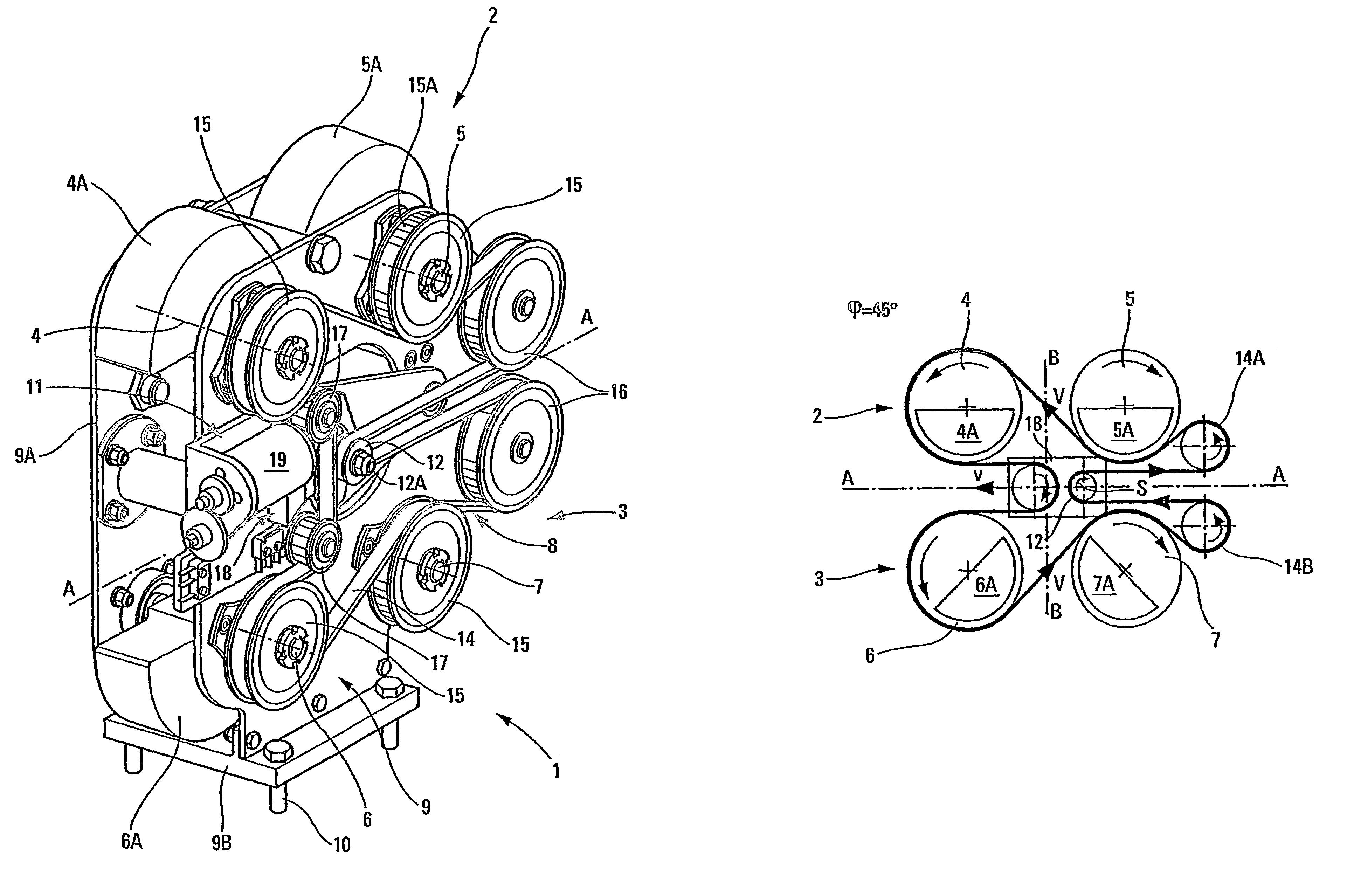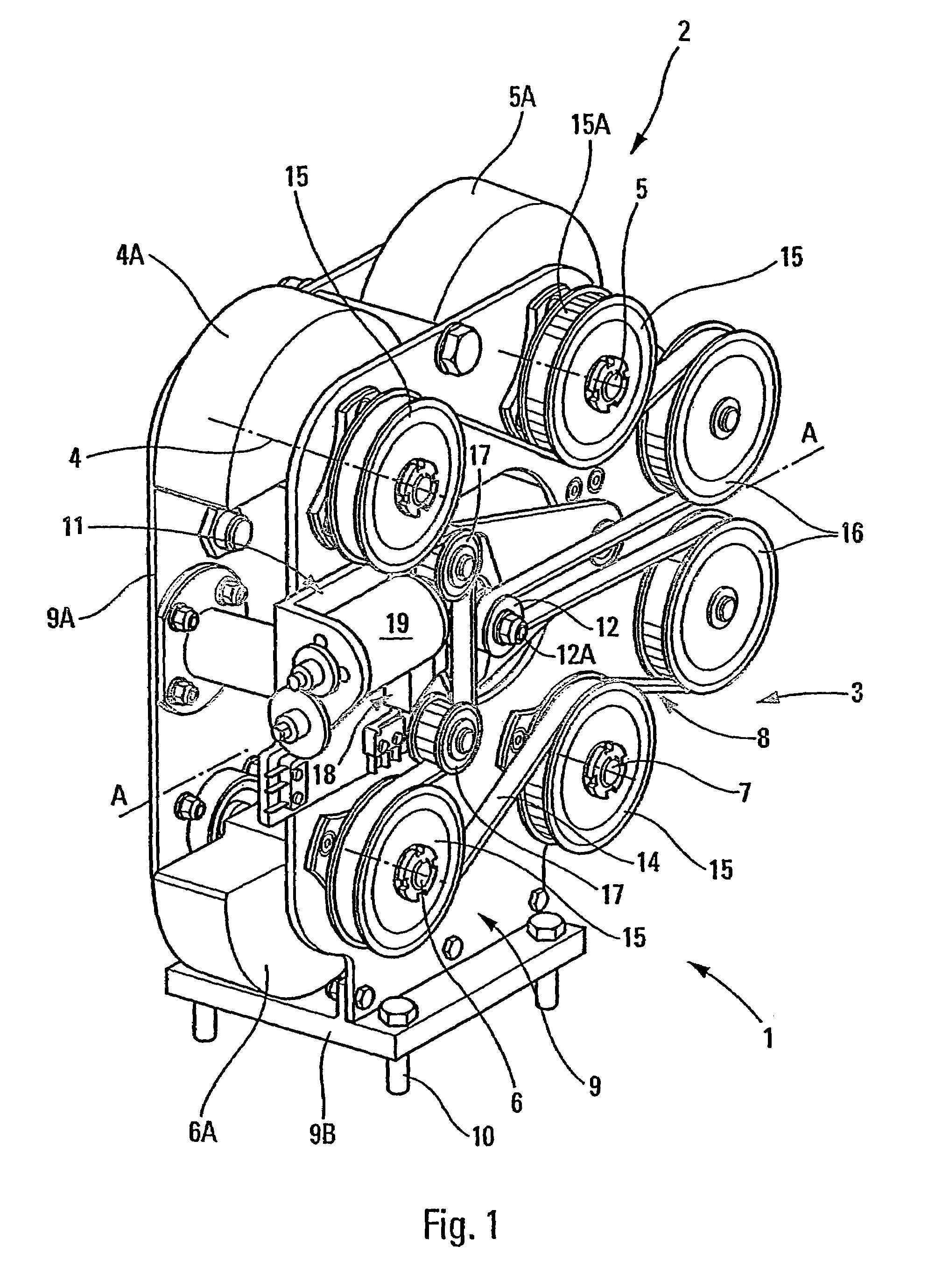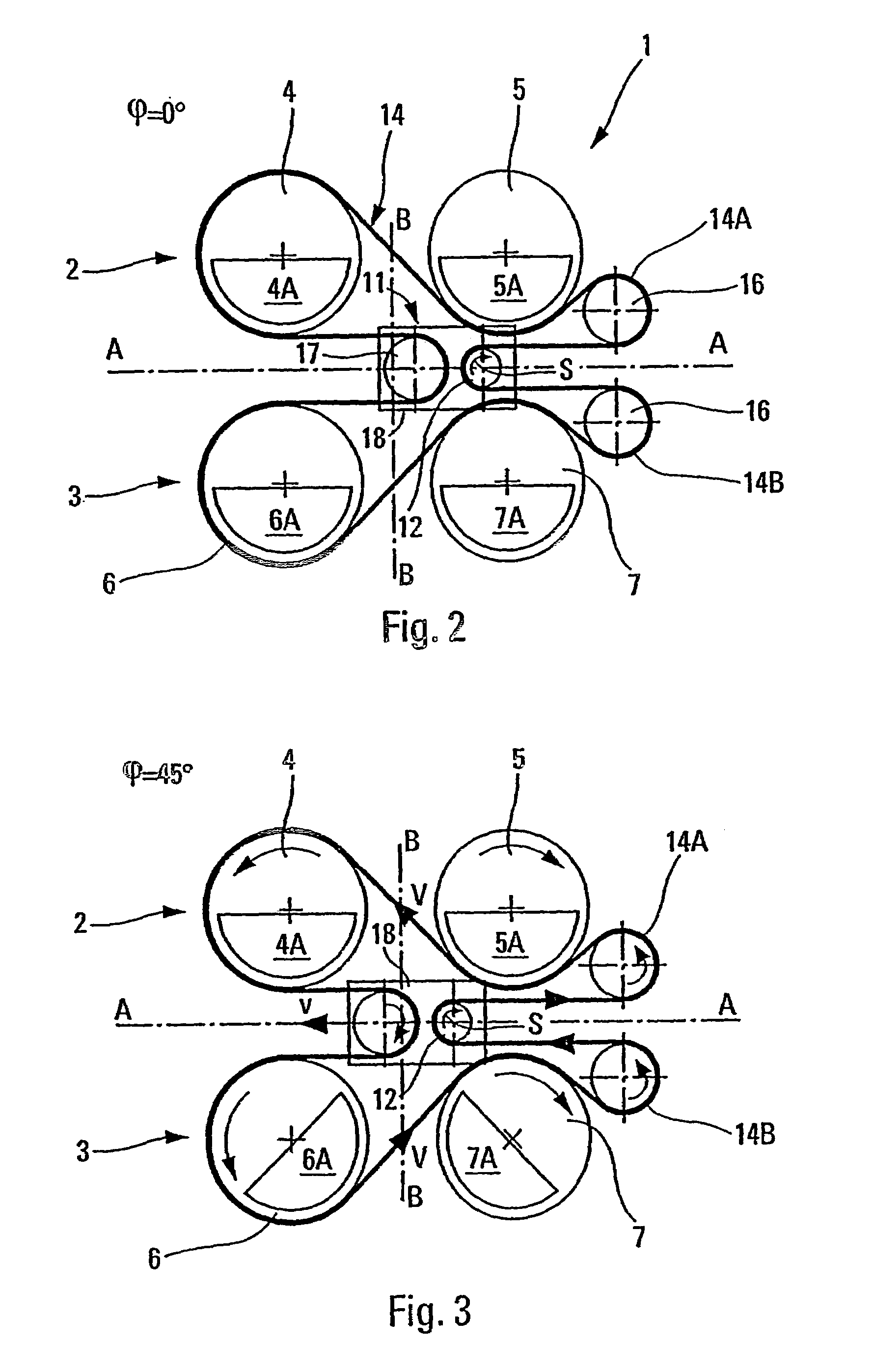Anti-vibratory device with rotary compensation weights
a technology of anti-vibration device and compensation weight, which is applied in the direction of mechanical vibration separation, rotocraft, air-flow influencer, etc., can solve the problems of reduced changes frequency, limited effectiveness of devices of that type, and reduced effectiveness of anti-vibration devices, so as to reduce the dimensions and weight of the anti-vibration device
- Summary
- Abstract
- Description
- Claims
- Application Information
AI Technical Summary
Benefits of technology
Problems solved by technology
Method used
Image
Examples
Embodiment Construction
[0037]The antivibration device 1 shown in FIG. 1 comprises two identical modules or sets 2 and 3 each comprising two rotors or rotary shafts respectively referenced 4, 5 and 6, 7, and associated with respective flyweights 4A, 5A and 6A, 7A that are eccentric relative to the axes of rotation of the rotors. In this embodiment, the two sets 2, 3 are disposed in a common vertical plane and are separated from each other about an axis of symmetry A that is horizontal. The axes of the rotors 4, 5, 6, and 7 are parallel to one another (horizontal in this example) and orthogonal to the axis of symmetry A of the identical sets 2, 3 such that the rotors are opposite in pairs, the rotors 4, 5 and 6, 7 being at equal distances from an axis of symmetry B (vertical in FIGS. 2 to 6) that is orthogonal to the axis of symmetry A.
[0038]A drive system 8 serves to drive the rotors 4, 5, 6 and 7.
[0039]In addition, the rotors of said sets are carried, via bearings (not shown), by a frame 9 constituted by ...
PUM
 Login to View More
Login to View More Abstract
Description
Claims
Application Information
 Login to View More
Login to View More - R&D
- Intellectual Property
- Life Sciences
- Materials
- Tech Scout
- Unparalleled Data Quality
- Higher Quality Content
- 60% Fewer Hallucinations
Browse by: Latest US Patents, China's latest patents, Technical Efficacy Thesaurus, Application Domain, Technology Topic, Popular Technical Reports.
© 2025 PatSnap. All rights reserved.Legal|Privacy policy|Modern Slavery Act Transparency Statement|Sitemap|About US| Contact US: help@patsnap.com



